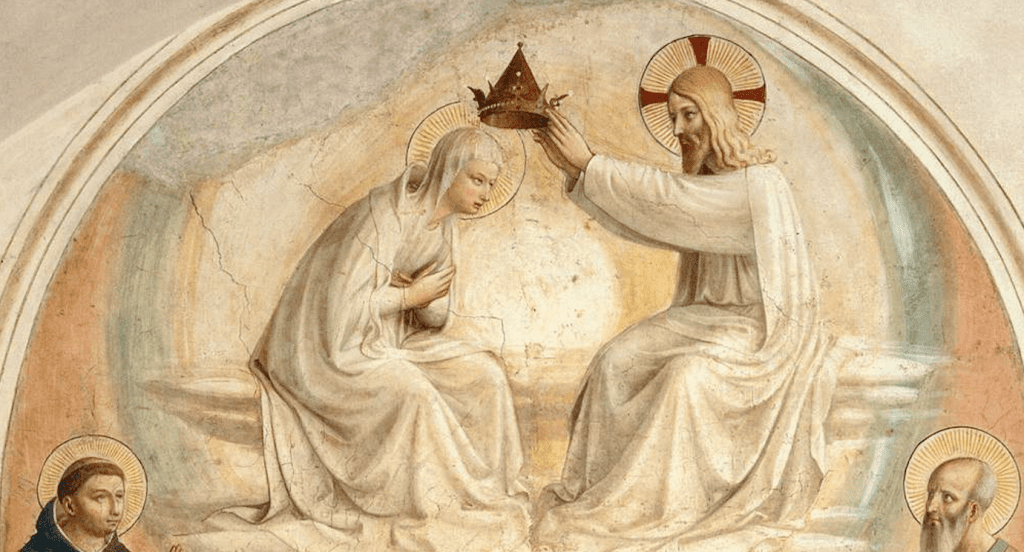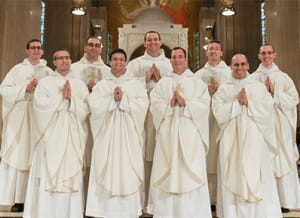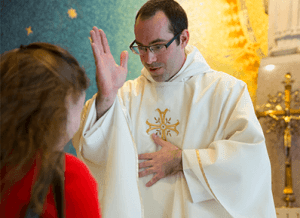Queen of Heaven, Rejoice!

 Queen of Heaven, Rejoice!
Queen of Heaven, Rejoice!
By Fr. Norbert Keliher, O.P.
This article originally appeared in Dominicana and is reprinted with permission.
Easter is a time of rejoicing. Not just on the day itself, or in the octave, but for all 50 days until Pentecost. This is longer than the 40 days of Lent, which is meant to prepare for Easter without surpassing it in length. Since we live in the light of the Resurrection as a present reality, it is only right that our season of rejoicing be longer than our season of penance.
At the same time, our Christian road of discipleship usually feels closer to Lent than to Easter. The duties of work, family life, classes, and our other occupations do not go away in Easter. We all have our struggles, and each day is a renewed battle to yield our life to Christ. To help us bear these trials in a spirit of joy that looks ahead to our own resurrection, the Church turns us toward the Queen of Heaven.
The Regina caeli, or Queen of Heaven, is one of the traditional prayers to Mary said during the Easter season. It’s sung at the end of the day, usually after night prayer, and also said in place of the Angelus prayer during the day. This is how the first four lines go:
“Queen of Heaven, rejoice, alleluia;
for He whom you did merit to bear, alleluia;
has risen as He said, alleluia.
Pray for us to God, alleluia.”
Who is helping whom here? What first comes to mind is that we are telling Mary to rejoice because her Son has risen from the dead. This makes us think of Easter morning, when Mary had not yet found out the news of the Resurrection and felt more grief than any of the other disciples because she loved Jesus the most. Sorrow is proportionate to love, so that even with perfect faith that her Son would rise from the dead, it was natural for Mary to feel grief. The Regina Caeli places us in a dramatic dialogue with Mary, telling her the good news of the Resurrection to gladden her mourning heart.
There is truth to this memory of the past, but we speak the prayer in the present. This means that like most prayers, the change at work is in us, not the one to whom we’re praying. We were not there on Easter morning to tell Mary about the Resurrection, and in fact it was probably Jesus who brought the news to His mother. For Mary now, the only present reality is the victory of eternal life. We tell Mary to rejoice, but she is already rejoicing while she beholds her Son in glory.
What is the real effect of this prayer? When we tell Mary to rejoice, it reminds us of our own need to rejoice. I think this is why the fourth line asks for Mary’s intercession: “Pray for us to God, alleluia.” As Mother of the Church, her joy overflows into her children, and her prayers obtain graces for us that appropriate this joy for ourselves. If we join ourselves to Mary’s rejoicing, then in this Easter season we will make progress in letting the light of the Resurrection shine on our struggles.
✠
Image: Fra Angelico — “The Coronation of the Virgin”
The Dominican Foundation of Dominican Friars Province of St. Joseph, Inc. is a NY State tax-exempt corporation under section 501(c) (3) of the Internal Revenue Code, with
Tax ID # 26-3273636.






